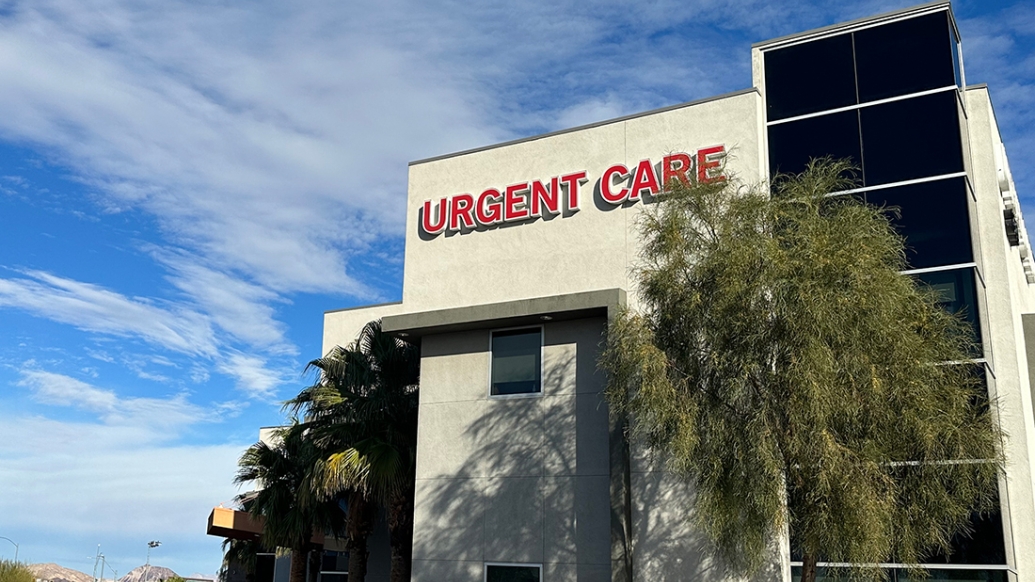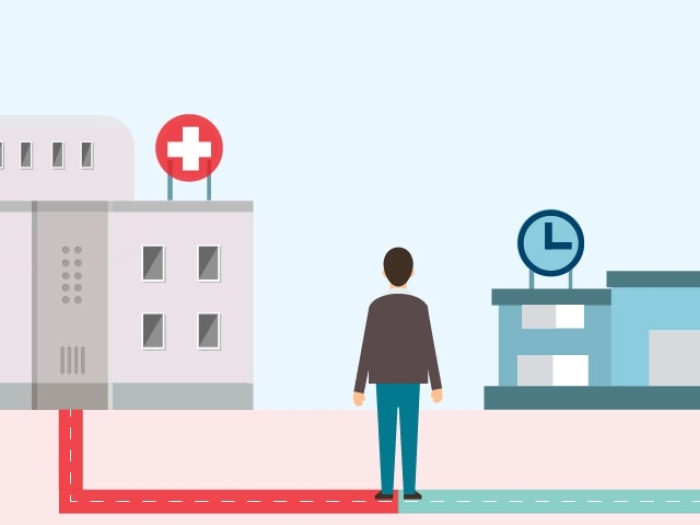Majority received health care at alternative site in the past two years, but survey shows variations in use, motivations and attitudes
4:45 PM
Author |

When today’s older adults were growing up, urgent care centers and clinics inside retail stores didn’t exist. But most of them have now embraced these non-traditional sites for getting medical care, a new national poll finds.
In the past two years, 60% of people age 50 to 80 have visited an urgent care clinic, or a clinic based in a retail store, workplace or vehicle, according to new findings from the University of Michigan National Poll on Healthy Aging.
Urgent care clinics were the most common alternative source of care, with 47% of adults age 50-80 visiting one at least once, and 23% going more than once, in the past two years.
Many of those who went to any alternative site said they did so to avoid going to the emergency room (44%) or to get a vaccine, a test or an exam (35%). They went for a variety of health reasons, including getting immediate attention for symptoms and injuries, getting vaccinated, and receiving tests or treatments for COVID-19 infections.
And 75% of those who have gone to such a site recently say they’re likely to go again in the next two years.
With the nationwide shortage of primary care providers, it’s important to understand how this age group, with generally higher medical needs, views and uses this type of care."
-- Jeffrey Kullgren, M.D., M.P.H., M.S.
Preference for regular clinic
But even as they sought care at these sites, most older adults who also have a primary care provider preferred the quality of care and sense of connection at their regular clinic. Among those who say they’re not likely to go to an alternative site for care in the future, 74% said it’s because they prefer to go to their regular provider.
The poll is based at the U-M Institute for Healthcare Policy and Innovation and supported by AARP and Michigan Medicine, U-M’s academic medical center. Two members of AARP’s Public Policy Institute worked with the poll team on the poll questions and report.
“The rapid rise in availability of these kinds of clinics, which typically offer walk-in convenience, expanded hours, and self scheduling of appointments in locations close to home, work or shopping, has transformed the American health care landscape in less than two decades,” said poll director Jeffrey Kullgren, M.D., M.P.H., M.S. “With the nationwide shortage of primary care providers, it’s important to understand how this age group, with generally higher medical needs, views and uses this type of care.”
Kullgren is a primary care physician at the VA Ann Arbor Healthcare System and associate professor of internal medicine at U-M.
“Access to timely and convenient care was critical for older adults during the pandemic, and our research shows alternative care options will continue to be in demand for the long term,” said Susan Reinhard, senior vice president and director of AARP Public Policy Institute. “Policymakers and clinicians must ensure that patients receive high quality care at sites like urgent care clinics that is well-coordinated with their usual health care provider.”
Other key findings from the poll:
- The percentage of older adults who had gone to a retail clinic was half that of the proportion who had gone to an urgent care center, at 28% vs 47%. Only 9% had gone to a clinic at their worksite, and 5% had gotten care from a traveling provider based in a bus or van.
- Those in their 50s and early 60s were more likely than those age 65 to 80 to have sought care from one of these types of alternative care sites, at 64% vs. 55%.
- Women were more likely than men to have gone to an alternative site for care in the last two years, at 63% vs. 57%.
- Older adults who live in urban or suburban areas with populations over 50,000 were more likely than those in less populated areas to have gone to an alternative site for care, at 62% vs 52%.
- 61% of those who said they have a primary care provider said they visited an urgent care clinic, retail clinic or other alternative site in the past two years. The majority (64%) had let that regular provider know they had gone to an alternative site.
- Asked to compare the two, 43% of those who had gone to an alternative site for care said the alternative site was more convenient than their usual provider. But 52% said the quality of care was better at their usual provider’s clinic, and 67% said they felt more connection to their provider at their usual clinic.
- Cost does not seem to be a main driver for seeking care at a non-traditional site, with only 9% of alternative site users citing it as a reason. And 19% of those who had gone to an alternate care site said their alternative site was better on cost. Also, 23% of those who said they weren’t likely to go to an alternative site for care in the next two years said that they were concerned about cost or lack of insurance coverage for such care.
- 43% of those who haven’t gotten care at an alternative care site in the past two years say they are likely to do so in the next two years.
SEE ALSO: Primary care scarcity lined to more surgical emergencies, problems
The poll report is based on findings from a nationally representative survey conducted by NORC at the University of Chicago for IHPI and administered online and via phone in July and August 2023 among 2,657 adults aged 50 to 80. The sample was subsequently weighted to reflect the U.S. population. Read past National Poll on Healthy Aging reports and about the poll methodology.
Citation: Alternative Sites for Health Care. University of Michigan National Poll on Healthy Aging. April 2024. Available at https://dx.doi.org/10.7302/22501.
Additional authors: Olivia Dean, M.P.H. and Harriet Komisar, Ph.D.
Sign up for Health Lab newsletters today. Get medical tips from top experts and learn about new scientific discoveries every week by subscribing to Health Lab’s two newsletters, Health & Wellness and Research & Innovation.
Sign up for the Health Lab Podcast: Add us on Spotify, Apple Podcasts or wherever you get you listen to your favorite shows.

Explore a variety of health care news & stories by visiting the Health Lab home page for more articles.

Department of Communication at Michigan Medicine

Want top health & research news weekly? Sign up for Health Lab’s newsletters today!





